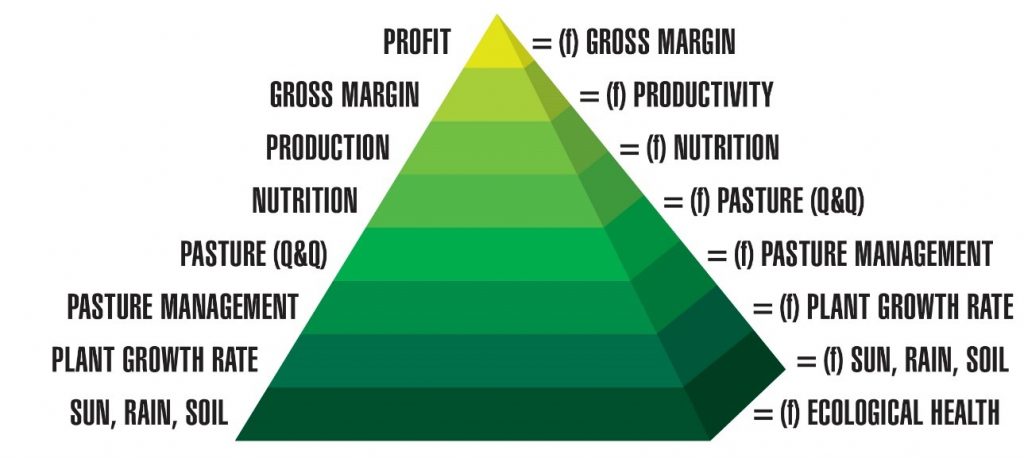
Dennis Donohoe, farm manager with Aminya Pastoral, is a seasoned producer with decades of experience, and his story is a testament to how even minor changes in farming practices can lead to significant improvements in productivity and land health.
When it comes to agriculture businesses, it’s critical to look at the whole business and not just specific components in isolation. Here at RCS, we use an analogy of a three-legged pot, where the three legs represent business, production and land management. The fourth key component of people management sits inside the pot. No business can exist without people, and what those people can achieve depends on how well they manage their land, money and production systems.
Using this analogy, we can consider the grazing industry, which needs to improve its grass resource management. Problems typically arise due to a lack of knowledge and resistance to change. As time passes, this is placing the industry under pressure as the capacity of the land to produce fodder reduces in line with decreasing ecological health and function. This reduction in carrying capacity is the opposite of what is required when costs increase and prices remain relatively static or volatile.
Every business must aim to maximise profitability sustainably from available resources. The RCS Pyramid of Profit visually shows that ecological health is essential to generate profit in a grazing business.
All grazing operations need to find and utilise practices that work with nature to maximise the bottom half of this pyramid. Using regenerative practices, you will then satisfy the ‘land’ leg of the three-legged pot.

Our grazing principles aim to leave the land in better condition than we found it whilst maximising profits.
The use of time-control grazing manages a local ecosystem with grazing animals to rebuild biodiversity whilst improving water and nutrient cycling and energy efficiency.
Through extensive research, observations and trial and error, RCS has developed the six principles of regenerative grazing, which are essential for a successful grazing operation. Our founder, Dr Terry McCosker OAM, developed the first iteration of these principles in 1990 after completing a Churchill Fellowship assessing the fundamental principles of grazing successes and grazing failures across the world.
The key is to implement as many principles as possible based on practicality, economic feasibility and business goals. The most recent iteration of the six principles is as follows:
Our courses explore these principles in great detail. If you feel your farm management could benefit from these principles, contact our team or sign up for a course or workshop.
Download the RCS Grazing Principles PDF for further details on what each of the principles mean.
Profitable Paddocks is our educational newsletter sent to your email inbox every quarter.
Click the Bell for the latest blogs.

Dennis Donohoe, farm manager with Aminya Pastoral, is a seasoned producer with decades of experience, and his story is a testament to how even minor changes in farming practices can lead to significant improvements in productivity and land health.
Once you have ownership as to why planning is important, the next ingredient is to work out where and how you will do your planning. When you write something down you change your relationship with the content. I cannot emphasise enough the power of getting your thoughts and plans out of your head onto paper or the computer.
The season in SA and Tassie is particularly tight right now with little or no useful rain since early January and a generally failed 2023 spring prior to that. Right now, across southern Australia and much of the eastern NSW, you won’t need to drive far out into the countryside to see cattle and sheep grazing (and lying on) hay and silage trails lined across paddocks.
Martha Lindstad and partner Robert James are farm managers on ‘Karalee’, Enngonia NSW. Both have travelled different paths to being where they are. Martha is originally from Norway, growing up on a three hectare farm before travelling to New Zealand and eventually the Pilbara in Western Australia. It was here that she saw the benefits of sustainable farming for the country and livestock.
The Prince’s RCS mentor, Raymond Stacey, sees a strong future ahead for Simon and Laura. “The Drought Resilient Soils and Landscapes project is about supporting graziers to manage their country and businesses better,” Raymond said. “I see an operation here where they’re working hard on their planning and putting their plans into action to leave their country, business and people in better shape.”

Join our mailing list
